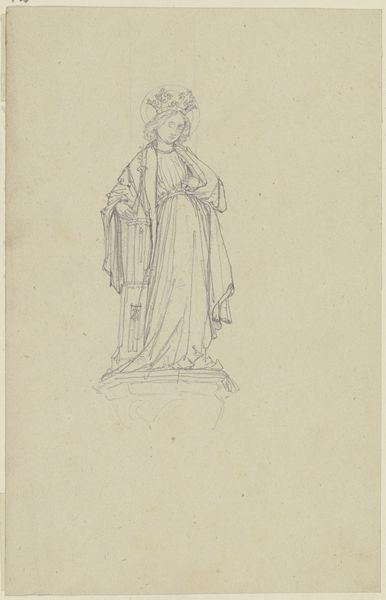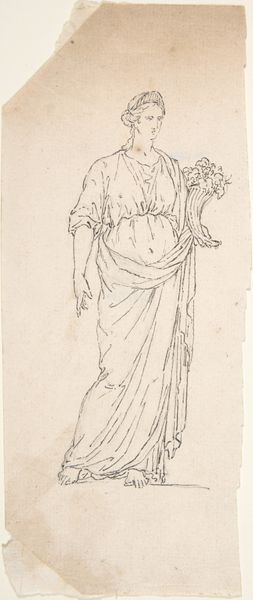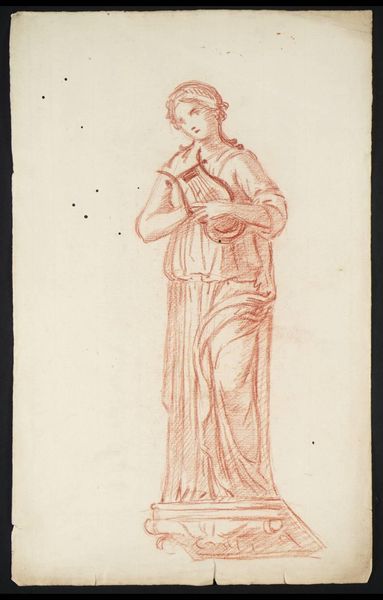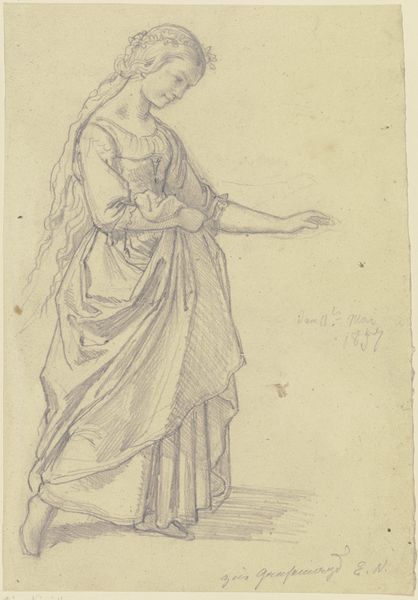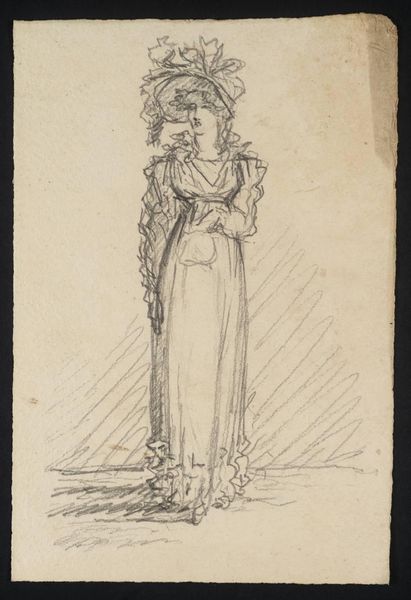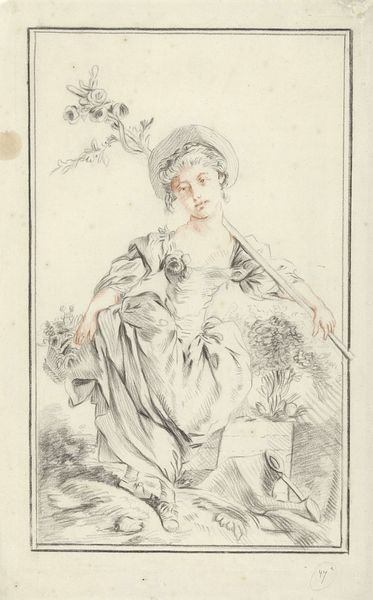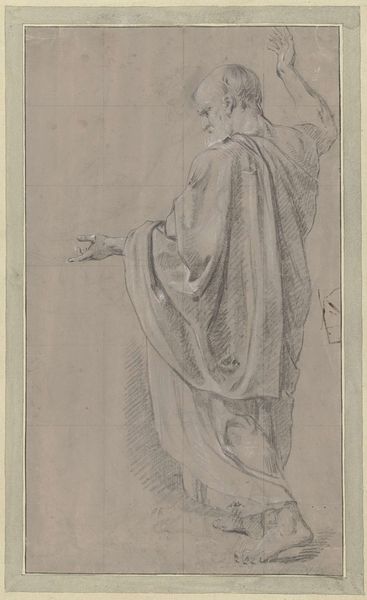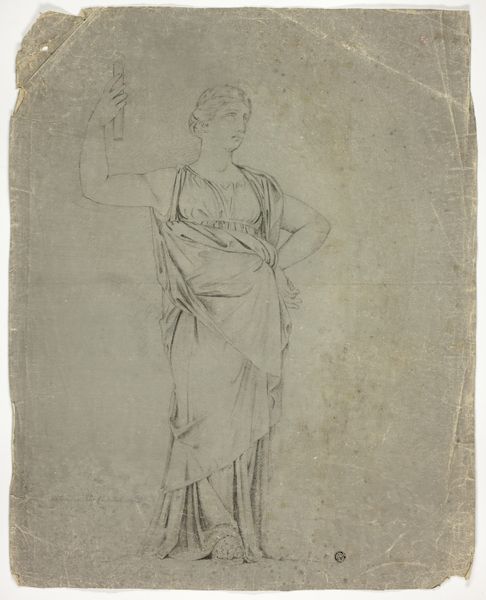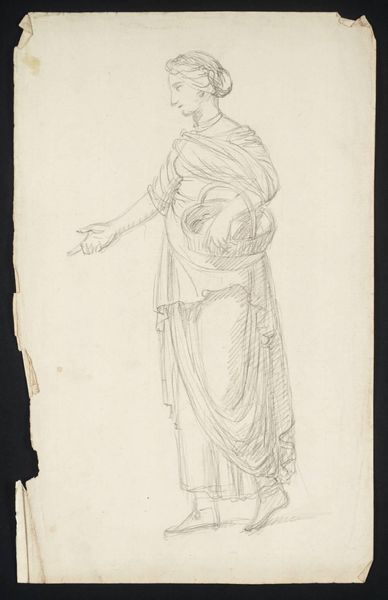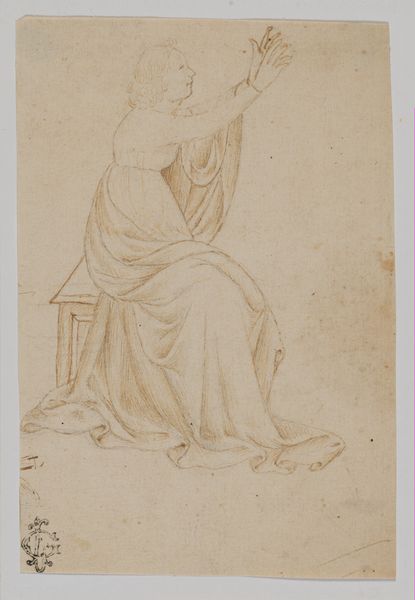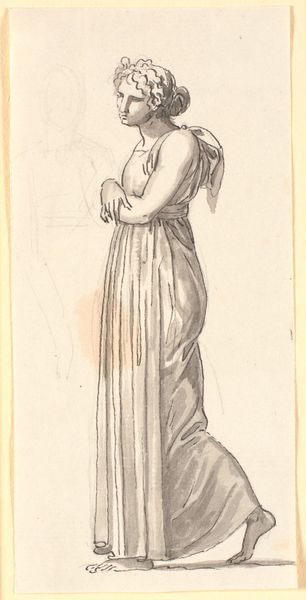
drawing, pencil
#
portrait
#
drawing
#
figuration
#
pencil
#
history-painting
Dimensions: height 635 mm, width 512 mm
Copyright: Rijks Museum: Open Domain
Curator: Abraham van Strij’s pencil drawing, simply titled "Flora," likely dates between 1763 and 1826. Editor: My immediate impression is of lightness. Despite being a preliminary drawing, the figure exudes a serene confidence, and the delicate lines suggest a fluid grace. Curator: Note how Strij uses line weight to create volume and depth. See how the heavier lines define the contours of her body and drapery, contrasting with the delicate, almost ephemeral rendering of the floral elements. The classical contrapposto pose further enhances the figure’s three-dimensionality within a two-dimensional plane. Editor: I’m intrigued by the choice of Flora, the Roman goddess of flowers and springtime. Her placement here raises some interesting questions. The era, steeped in enlightenment ideals, also wrestled with notions of femininity and idealised beauty. Does Strij subtly critique the performative aspect of femininity inherent within mythological representation, depicting a woman holding both her femininity and literal abundance—a flower basket—aloft? Curator: Certainly, her posture conveys strength rather than submissiveness, but the work's formalism doesn't explicitly lead towards a social reading. We can deconstruct the figure further. The drapery folds, for example, create a series of receding planes. Consider the tension between the detailed rendering of the face and the more gestural quality of the torso and skirt, how this plays with perceptions of realism versus stylization. Editor: I see your point. And perhaps, in that very tension, lies another layer. She seems to negotiate her identity both as goddess, object of desire, and human, with labour of supporting literal baskets of her attributes. Curator: Precisely! Such formal considerations can lead to much larger insights and richer analysis. Editor: Agreed. Ultimately, van Strij's Flora encourages us to explore and consider historical beauty through different conceptual frames.
Comments
No comments
Be the first to comment and join the conversation on the ultimate creative platform.
